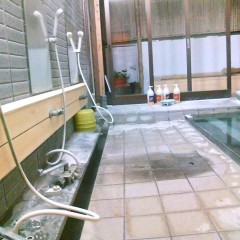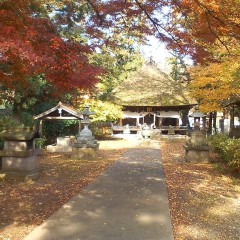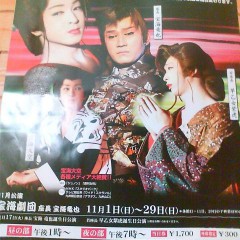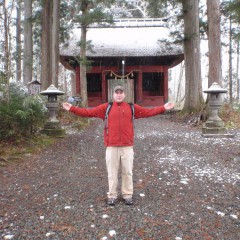
New Wood Accent in the Women's Bath
先日に書いたように、亀清旅館の女風呂のシャワーの調子が悪かったので直す作業を始めた。私が簡単な配管作業及びその配管を隠す為の木箱をやって、基礎の管とのつながり及びタイルの仕上がりは設備屋さんに任せました。
設備屋さんに「ワシは大工さんじゃないからその木箱は手伝えない」と言われたが、「この木箱が簡単なのでこちらで出来る;そのつながりやタイルの仕事は私に無理だから、頼みますよ」と答えました。作業は大変だったけど、シャワーはやっと直りました。
考えてみれば、温泉旅館でシャワーが調子悪いと言う事は、お客さんに失礼ですね。この間、ある先輩に「我々旅館はまず、お客さんに失礼な事をしない努力はしなければならない。その最低限の事さえしてない宿は沢山ある」と言われました。お客さんに喜んで頂ける為におもてなしするのは本来の目的だと思っていましたが、喜ばないようにならない事も大事だと分かりました。
それにしても、私はどうしても積極的に考える方なので、今回の修理を生かして、内装がタイルばかりで多少に硬い感覚のあった内風呂に、もうちょっと人間に優しい木のアクセントを取り入れました。隣の露天風呂はヒバで出来ているので統一する為にヒバの板を使って、配管を隠す箱を作りました。
皆様はどうぞ、楽しんで使ってください。
As I mentioned the other day, our ladies bath's showers weren't functioning properly. I worked on the new pipes as well as a wood box to contain them, and had a plumber come in to connect it with the existing pipes as well as do the tilework. The plumber commented that there was no way he way going to help with the woodwork "'cuz I ain't no carpenter". I told him the woodwork was a piece of cake, and that the pipe connection and tilework was way beyond my abilities. We ended up making a pretty good team, and the showers now work properly!
One of my mentors in the ryokan industry had this piece of advice: We ryokans must strive to avoid providing rude service to our guests. You'd think that would be automatic, but there are plenty of inns out there that fail to do even that most bare minimum.
I had always thought of ryokans as trying to provide guests an enjoyable stay, as opposed to just trying to avoid being rude. But I see his point, and non-working showers was definitely being rude to our guests.
However, I couldn't bring myself to just do the bare minimum. While fixing the showers, I took advantage of the change to add a soft, people-friendly wood touch to the harsh tile interior of the bath. In order to match the yellow cedar outdoor bath, I took some yellow cedar planks and made a wood box to hide the new pipes.
I hope our guests enjoy the improvements.













